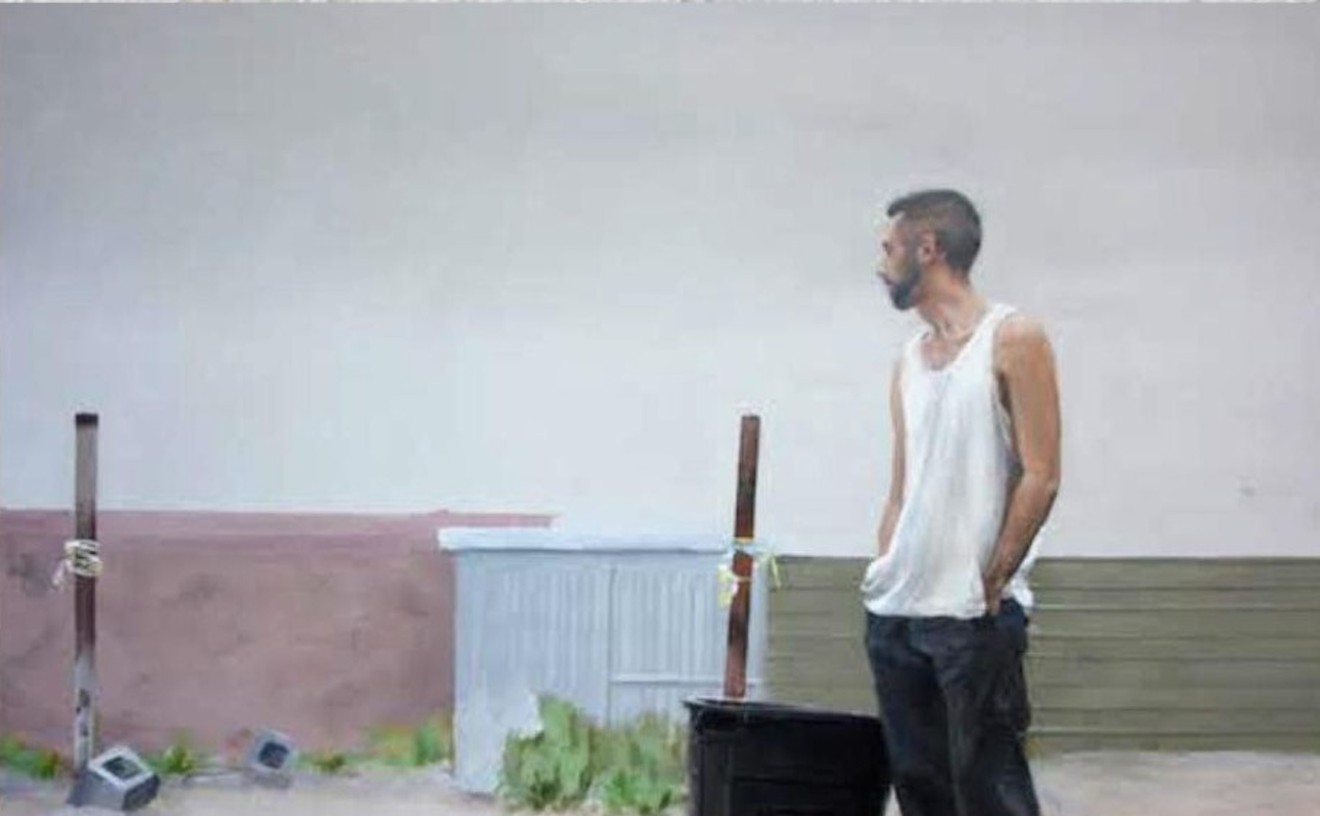Sustainability, as it is now officially called, is a hot item — so hot that conferences are being held to push green building and living. That includes Greenbuild 2009, billed as the world's largest conference and expo dedicated to all aspects of greenness. Last month, it was held at the Phoenix Convention Center. ASU is one of Greenbuild's high-profile sponsors, so it's not surprising that sustainability has filtered down to ASU Art Museum as an issue worthy of consideration.
To that end, ASUAM has a lineup of exhibitions slated to fit into the green mold, including "Nowhere to Hide: Three Artists in the Desert," running until February 20. The show features the work of Julie Anand, assistant professor of photography at ASU; Richard Lerman, longtime multimedia artist/ASU West professor known for capturing the sounds of locations fraught with emotionally charged, historical significance; and Carrie Marill, a painter based in Phoenix. While admirable in its intent, "Nowhere," as a whole, fails to give us any unexplored or different insights into our ecological dilemma.
Anand has created large-scale photographs featuring the usual human-deposited detritus encountered while walking through both urban and rural landscapes. Anand is not the first (nor, I suspect, the last) photographer to engage in this archeological exercise. Several years ago, Phoenix artist/photographer Mark Klett created a number of images of objects abandoned by visitors to the desert.
Anand's twist is laying out photos of found objects on a white surface after having stripped each object of its background and adding an almost imperceptible drop shadow to it. The result evokes forensic evidence discovered at a crime scene — again, not an entirely original format. Though the artist's mural-size pieces are technically proficient and skillfully executed, they offer us nothing visually or conceptually off the beaten path, in respect to man's unconscious mucking with his environment. That being said, one of the most entertaining items on display is a page from a weathercast script dumped by an on-site television reporter.
Richard Lerman's multimedia installation, Hoover: Water/Power, seems to tediously overthink every aspect of Hoover Dam, which, he told a group attending a recent lecture about the piece, supplies Arizona with most of its water from the Colorado River. With the help of preparator Steve Johnson, Lerman constructed a graph against a museum wall composed of 473 water bottles, filled with graduated shades of water tinted deep blue to light green; the graph represents a visual history of the amount of water collected by the dam over a period of time (years are marked out on the floor). On the wall to the right of the graph, video imagery of the dam is projected, spatially intersected by freestanding "power transmission towers" made from thorn-covered ocotillo branches and red magnetic wire that feeds sound captured at the dam into "speakers" made of creosote and brittle bush, two plant forms indigenous to the area around the dam. The effect of the whole is disappointingly didactic and much less than Lerman's claim that it's his post-apocalyptic, analog view of the towers around Hoover Dam.
Breaking out from the pack, Carrie Marill's Visual Aids is a series of paintings based on 1950s French grammar school posters used as teaching aids, which she found in a French flea market. They're cheery posters, in elementary school hues and style, representing rose-colored windows looking out onto various landscapes in an impossibly idyllic world (there's even one of a river overflowing its banks, only mildly threatening to inundate a nearby village, that the artist turns into a Hurricane Katrina scenario). Marill scans these images and transfers them to watercolor paper, where they become the starting point for her vision of environmental degradation since the '50s.
The devil is in the details in these paintings, which have an ominous undercurrent. Anachronisms abound, so the viewer is forced to look closely, trolling for tidbits of scathing satire and historically out-of-place imagery liberally sprinkled throughout.
A great example of Marill's adroit conceptualizing and execution is found in Hot Water (2009), a cut-away of a palm-lined beach with outrigger canoes and a serene harbor filled with catamarans, from which divers jump to a coral reef. Marill has, in spot-on imitation of the colorful style of the underlying poster, added her own touches, including a Hokusai-style tidal wave threatening to swallow the shore, what appears to be either pollution or an infamous red tide engulfing the coral reef, and scuba divers equipped with lights and cameras shooting menacing sharks surrounding the hapless catamaran diver, while nearby a dolphin contemplates a plastic bag floating in the water. On the horizon, oil rigs mushroom, a trawler decked out with main sails floats by and a cargo vessel is tethered to a parasail. The beach does not go unmolested, as Marill paints in a graffiti-covered sea wall, a machine scooping up litter in the shallows, and a half-submerged geodesic dome close to shore.
This painting, as well as the rest in her series, exudes a mordant dream/nightmare quality that seamlessly smudges the lines between past and present, historical and contemporary. They are reminders of what we had and what we have mindlessly traded it for.










